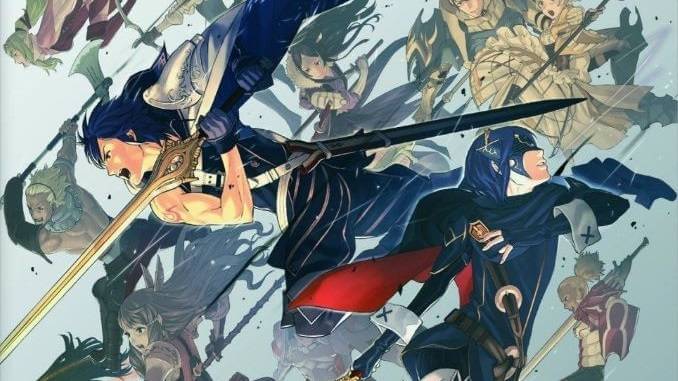
There are a lot of Fire Emblem games. This fall marks 20 years of the series debuting in North America, and it was already 13 years old by the time that happened.
While permadeath has been there from the start, and the whole “tactically and strategically moving around a grid superimposed on a field, dungeon, forest, whatever” thing has been a staple for as long, the Fire Emblem of 2023 is basically unrecognizable from that of 2003, never mind 1990. It isn’t a case of perpetually marching forth to progress, either: Fire Emblem has had its ups and downs, and that Intelligent Systems has always been willing to change things up in terms of the formula means lesser ideas were replaced with great ones, which were discarded for either inferior or sometimes even better hooks.
All of that (and today’s release of the next entry in the series, Engage) means that it’s time to rank Fire Emblems. Main series only—again, there are a lot of Fire Emblems.
16. Shadow Dragon & the Blade of Light
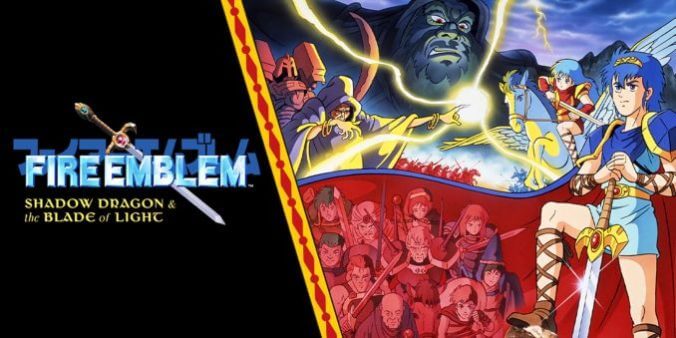
Year: 1990
Original Platform: Famicom
It’s what you’d expect from a Famicom tactical RPG in 1990. Space limitations combined with series’ creator, writer, and director Shouzou Kaga’s generally serious nature means the text is a little dry, and gameplay-wise it’s clearly the origin point for the series. Never mind social aspects or support mechanics: Shadow Dragon & the Blade of Light doesn’t even have the series’ signature weapon triangle, so the strategy part of things has more to do with straight-up character stats and how different classes can be utilized with those in mind. Shadow Dragon & the Blade of Light is mostly interesting as a curiosity in 2023, given it’s been remade in superior forms, one of which was made available in North America. The other has an unofficial translation, if you’re into that scene.
15. Gaiden
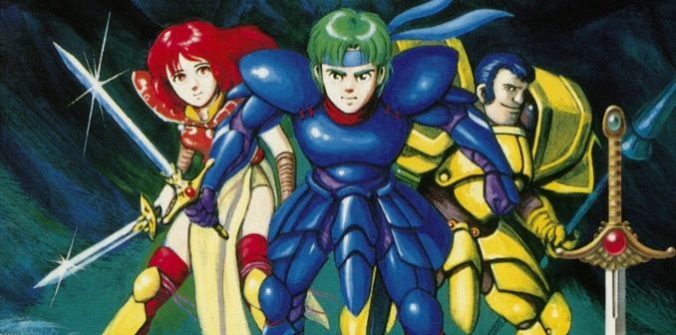
Year: 1992
Original Platform: Famicom
The thing with being ahead of your time is that it can mean either that audiences weren’t ready for your ideas yet or that the tech was not. You could argue Gaiden suffers from a little of both, but more of the latter. What puts Gaiden above the original Fire Emblem in spite of these issues is that same ambition. While the weapon triangle isn’t here, either, Kaga and Co. were in the early stages of figuring out what hook the series could have outside of permadeath in order to appeal to players and make the strategy deeper. They settled on combining tactical gameplay with (light) dungeon crawling, and making it so that casting spells cost you hit points—which not only made you even more susceptible to death, but could also limit what spells were even available when you needed them. Like with its predecessor, Gaiden would get its chance to shine with a remake down the road.
14. The Binding Blade

Year: 2002
Original Platform: GBA
The Binding Blade was the last original Fire Emblem title that wouldn’t be localized for international audiences, and 21 years later, it still hasn’t been. That’s aggravating from the perspective of someone who wants everything to be available everywhere always, but less aggravating than parts of The Binding Blade itself. The worst tendencies of the Game Boy Advance era of Fire Emblem games are all contained within, which makes some poor decisions in terms of pacing, roster size, and how long Roy, the protagonist you’re forced to use in every single level, remains weak and un-promoted from his starter class for narrative purposes. Babysitting weaker characters until they can be stronger wasn’t new for Fire Emblem, but required babysitting of the non-optional character that the game revolves around? It’s not a bad game, no, and is much easier to get into than the ones already ranked, but it’s clear that Intelligent Systems was still figuring out what Fire Emblem was even going to be after Kaga departed the studio.
13. Shadow Dragon
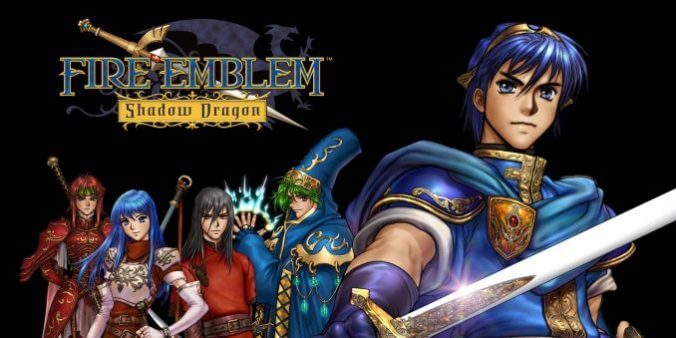
Year: 2009
Original Platform: DS
The space between rankings does not indicate how much of an improvement over Shadow Dragon & the Blade of Light this remake is. Shadow Dragon adds in a whole bunch of stuff fans had become accustomed to—more conversation, quality of life features like visible enemy range, quality character artwork, the weapons triangle—but it was also still lacking in some ways, especially on the social side. And the game’s text isn’t any less dry than it was back in 1990, either. Shadow Dragon is enjoyable in spite of its limitations, whether inherited from 1990 or lacking from what could have been, but it’s also forgettable in comparison to both Kaga’s other Fire Emblem games and loads of the post-Kaga titles, too. Still, it’s nice to see where that Smash Bros. character got his start, no?
12. Mystery of the Emblem
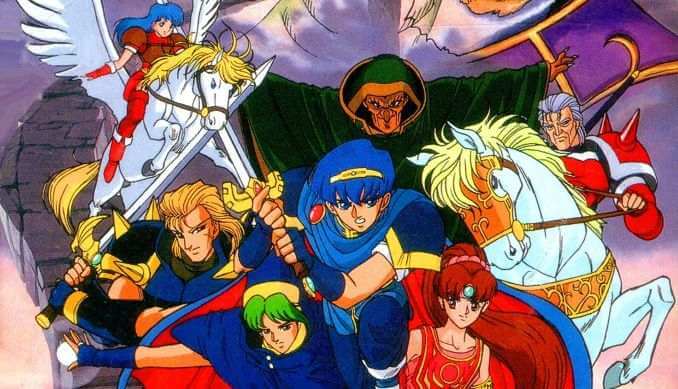
Year: 1994
Original Platform: Super Famicom
The real starting point for Fire Emblem turning into something that was going to stick, even if it still wasn’t quite fully developed. Permadeath was there, the storytelling was getting more complex and involved, and difficulty certainly existed. Mystery of the Emblem was still missing even basic social aspects and the weapon triangle, however, so while it succeeded as both a remake of Shadow Dragon & the Blade of Light and a brand new game-length adventure starring Marth and the fallout from the events of the first Fire Emblem, it’s still not quite the definitive version of either of its parts.
11. The Sacred Stones
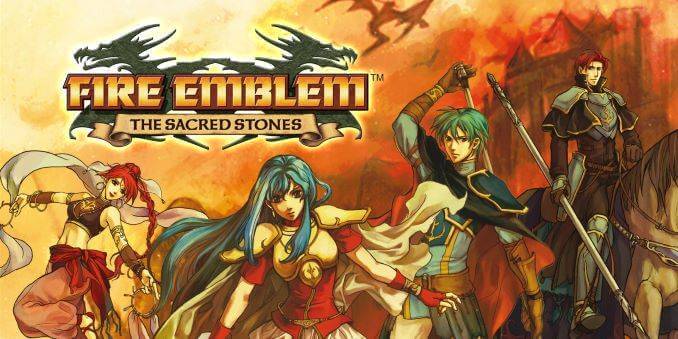
Year: 2004
Original Platform: GBA
The correct choice for Nintendo to localize over The Binding Blade when their schedule only allowed for one of the two to make it out of Japan. We’ve got to pick some nits to rank games, though, and The Sacred Stones is full of ‘em. Intelligent Systems was in the early stages of experimenting with ways to let you gain additional experience for units outside of the required battles, which is now the kind of thing that’s regularly available in Fire Emblem games, but in The Sacred Stones, returning to a tower again and again with a huge roster of weaker characters that need to be beefed up kind of just messes up the pacing and the balance of the experience. It’s a better game if you skip a lot of that (and you can), but again. Nits.
10. Radiant Dawn
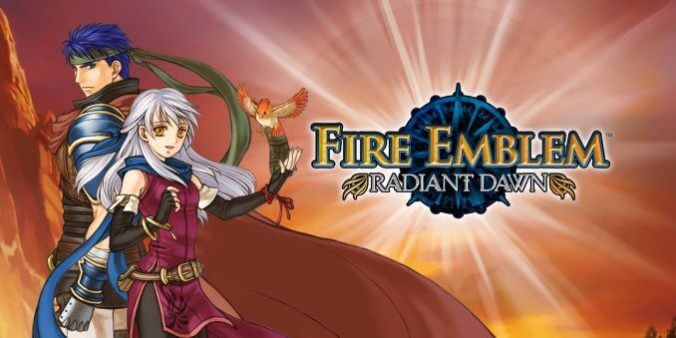
Year: 2007
Original Platform: Wii
Radiant Dawn is a fairly difficult affair for a more modern Fire Emblem title, as it decided to fix the massive roster issue of games like The Binding Blade by increasing the chances that you would see your characters die. It can be even rougher than that sounds, too, as you’re controlling various forces throughout the game, not just one major army: you might be fine controlling the veteran Greil Mercenaries in the second Fire Emblem in which they star, but at the same time be low on manpower with Micaiah’s Dawn Brigade, which is building from the ground up and fighting off an entire oppressive empire by themselves. This all works until the endgame, which brings in the world’s most powerful allies and frenemies to help you defeat god, a move that renders quite a few of the characters you’ve spent 40-50 hours with rather pointless. Given part of the thrill of these games is in turning a random mercenary into a juggernaut capable of killing ancient dragons even without a legendary weapon equipped, this was a bit of a bummer, especially at this game’s length.
9. New Mystery of the Emblem
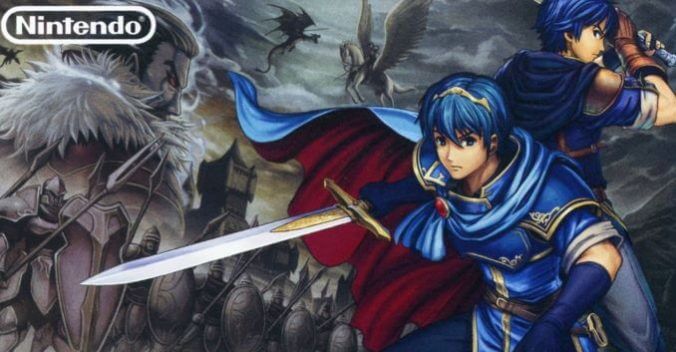
Year: 2010
Original Platform: DS
This remake of Mystery of the Emblem never released outside of Japan, largely due to the disappointing sales of its predecessor. It’s the superior of the two, as it helped bring its tone and writing more in line with what Fire Emblem had become by introducing an avatar character and some light social aspects in between chapters. With Marth now treated as a co-protagonist in many ways, the flow of the game’s narrative and general writing is improved, as all of the new bits fit in well, but have more life to them than the old. Throw in that New Mystery of the Emblem also includes a brand new prologue as well as an additional remake of the Satellaview’s BS Fire Emblem, and it’s no wonder it comes out a few spots ahead of Shadow Dragon.
8. Echoes: Shadows of Valentia
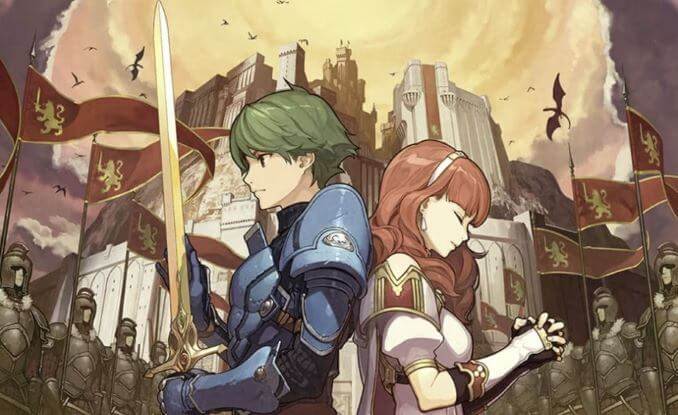
Year: 2017
Original Platform: 3DS
Admittedly I’m not a huge fan of the dungeon crawling stuff here for some pacing and organizational reasons, but with that preamble out of the way… all of the modernizing changes Intelligent Systems made to bring Gaiden out of the Famicom era and onto the 3DS in the present just proved that its ideas were ahead of their time. It’s like an entirely different direction that Fire Emblem could have taken following Gaiden but didn’t, with Intelligent Systems basically figuring out two different tactical games with some similar foundational concepts and then going back to the first for future iterations. Which would continue to evolve, while the ideas of Gaiden stayed in 1992. Shadows of Valentia finally brought them out of that time prison and became a remake that was fully integrated into the modernity of the franchise, while retaining and enhancing everything that made the original work. And hey, it has arguably the most attractive character art and portraiture in the entire franchise, which Echoes seems to be aware of since it’s always on display.
7. The Blazing Blade
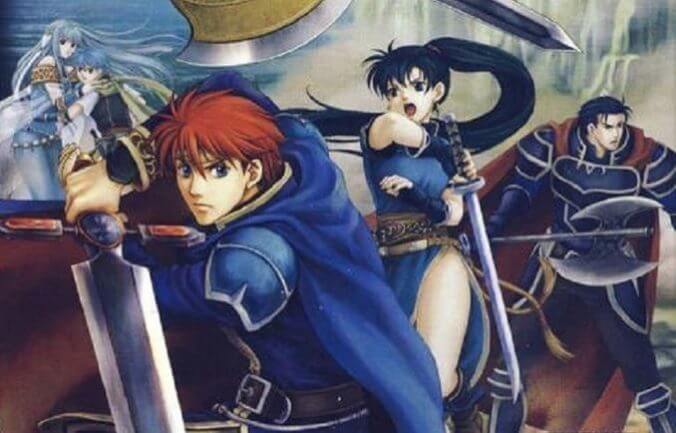
Year: 2003
Original Platform: GBA
You might know this better as just Fire Emblem, as it was the first game in the series to be released outside of Japan and was named as if it were also the first in the series in general. The Blazing Blade is the only one of the GBA trilogy to fully rise above the issues Intelligent Systems was still sorting out in the wake of Kaga’s departure. The character roster is great and memorable. The trio of protagonists are a lot of fun to both play and interact with, especially in how they work off of each other, and they each have their own campaigns, too. The Blazing Blade served its purpose as the international introduction of Fire Emblem thanks to the optional prologue where you play as Lyn, and while there have been better Fire Emblems since, we’ve gotten them in part because this game hit all the notes it needed to so well in the first place.
6. Fates
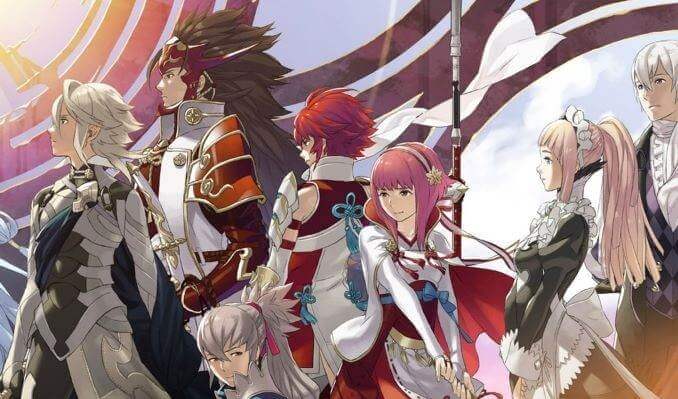
Year: 2015
Original Platform: 3DS
Fates, which is broken into three separate games in a way even Pokémon would be envious of, is incredibly ambitious. Though there are mistakes—the cast is far too large and unwieldy in the third and final path since it mashes the previous two games together into something new, there’s no real narrative justification for doing the time-shifting descendants bit from Awakening again, there are some… unsettling decisions made with some characters and relationships—the total package is just too good to ignore unless you’re one of those people who hasn’t been happy about anything Fire Emblem since 2003. It’s a whole lot tougher to fully replay than the others because of the sheer scope, but it remains a successful experiment all the same that even briefly ranked as the best-selling tactical RPG ever, as well as the genre’s first three-million seller.
5. Awakening
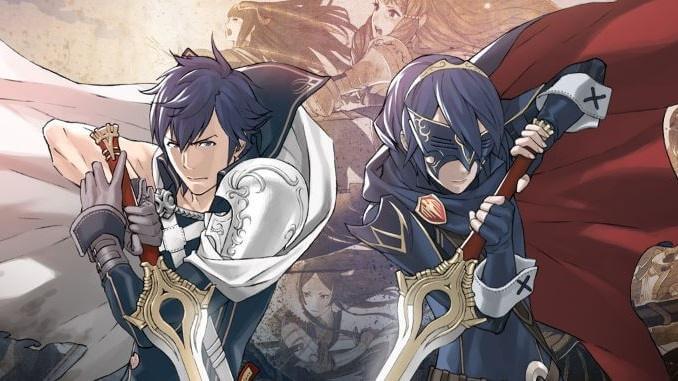
Year: 2012
Original Platform: 3DS
In some ways, Awakening is a mess, the result of absolutely everything being thrown at the wall in a last-ditch effort to make Fire Emblem sing. It was a swan song that would never be because of how successful it ended up, in no small part because of the mess. Awakening’s divisive within the community because of how much it leaned on the social aspects over the pure strategy, and it’s a rare swing-and-a-miss on the difficulty side of things because of how it chose to make things tougher beyond Normal (randomly being crit’d to death more often? You can’t plan for that!) The pacing is terrible, as the haste the narrative always implies does not match how you operate at all due to the optional-yet-necessary side and experience-building chapters out there waiting for you to play. And yet, Awakening, its cast, and its support/parenting hooks are as compelling as can be, a love letter to the series’ origins and, unintentional or not, its future, too. It’s easy to understand how it ended up being the game that saved Fire Emblem instead of just its fan service-y farewell, and Intelligent Systems would (eventually) figure out how to balance all the new bits in a less messy way.
4. Thracia 776
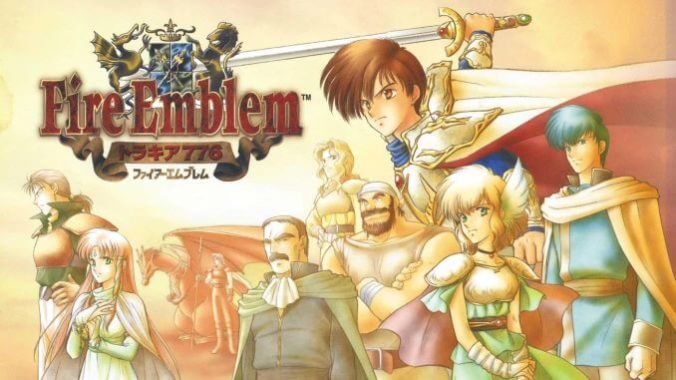
Year: 1999
Original Platform: Super Famicom
Yes, 1999: Thracia 776 was a Super Famicom game that released toward the end of the Nintendo 64’s lifespan. In Japan, there were nifty add-ons and features for the SFC that never came to the SNES, like rewritable cartridges you could load a game onto at select retailers. It was a way to keep the system and 16-bit developers active during the era of the N64 without taking up retail shelf space, and Thracia 776 originally released in this format. Thracia itself is an absolutely brutal experience, but not because it’s poorly designed. Quite the opposite: Thracia 776 is a tremendous sendoff for Kaga’s particular style of tactical RPG, a relentless game where you’re always outnumbered and one mistake away from making those odds even worse. It’s fantastic, and the feeling you get from how things are going tactically mirrors the state of things in the narrative: Thracia 776 is a game where you come into it knowing things don’t work out, because it takes place in the middle of another Fire Emblem game. And let’s just say the protagonist of this game no longer has his rebel army behind him by the time you recruit him in that one. It’s without question the toughest Fire Emblem going, and will probably wear that crown forever. That it hasn’t been made available outside of Japan is a Fire Emblem-related crime that only pales in comparison to one other.
3. Path of Radiance
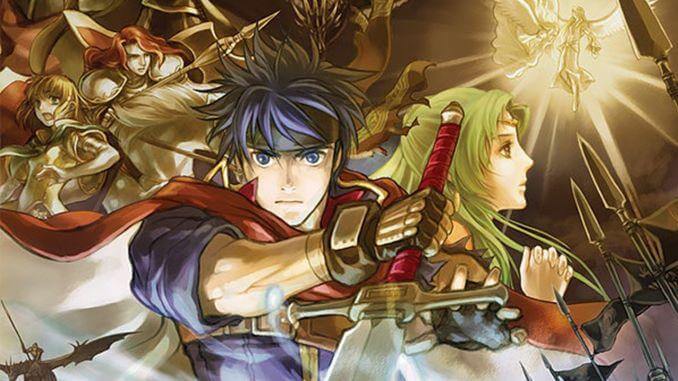
Year: 2004
Original Platform: Game Cube
The greatest pure Fire Emblem: Path of Radiance lacks the major differentiating hooks of the games that rank ahead of it on this list, but it has arguably the greatest protagonist in the franchise in Ike, a start-to-finish effective and coherent story (ideologically speaking, even), and just enough of the social aspects to make you fall in love with the characters—not just the main ones—and have them be a whole lot more realized than those in the GBA trilogy. It doesn’t have the full social experience of later Fire Emblem, but you’ll want to gobble up every character interaction and philosophical discussion within before you get back to avenging deaths and saving a country in peril from a madman intent to rule the entire world through military might and ancient magics. Everything clicks, and there’s a reason so many reviews at the time had to focus on how the graphics weren’t up to par: what else was there to even complain about?
2. Genealogy of the Holy War

Year: 1996
Original Platform: Super Famicom
There is no other Fire Emblem like this one. Genealogy of the Holy War is the real leap forward for the series, to the point that it was the best in the franchise until the one you’ll read about next arrived. The weapon triangle finally arrived here, and was put to immediate use in large-scale chapters that took an hour or hours to complete. You’re used to Fire Emblem games with 25-30 chapters, or tons of side missions and short battles, but Genealogy of the Holy War’s 12 chapters have you feeling like you’re fighting an actual war, with troop movements across entire countries occurring within a single chapter: finish your initial goal, and you’ll find that the map has opened up further, bringing in new potential allies to protect, foes to defeat, challenges to be overcome. Thracia 776 was personal and claustrophobic in its level design to great effect, while Genealogy of the Holy War opened things up in such a way that you’d find yourself regretting decisions you made 30 minutes prior, half the distance of a country ago.
Character supports exist here in ‘96, and you need to utilize them: you’ll eventually get characters to fall in love, get married, and have a kid or kids, but unlike in Fates or Awakening where weird dimensional stuff and time travel allows for them to grow up into allies, in Genealogy of the Holy War, the children are your future, because—spoiler alert for a 27-year-old game—their parents are killed. Hey, “genealogy” is right there in the title, and holy wars ain’t short. Anyway, if the rumors of a remake coming to the Switch are not true, I will complain as loudly about this online as I have ever complained about anything, because you all deserve to play it with some modern quality of life touches in mind. In the meantime, find that unofficial translation, because it’s worth it.
1. Three Houses
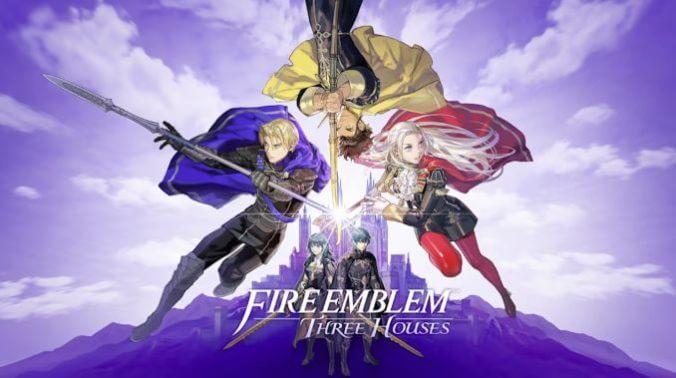
Year: 2019
Original Platform: Switch
Three Houses, with its emphasis on academy life, its inherent tragedy, the perils of a powerful church with its own secretive agenda, and what it means to remake the world into something fairer, is difficult to put down even after you’ve finished it. It’s already coaxed three full playthroughs out of me in as many years—around 50 hours for each house—and had enough juice left in the tank to be the basis for an alternate history Warriors spin-off that has sold more copies than most of the main series Fire Emblem entries. Sales alone aren’t a marker for quality, but it’s worth noting that Three Houses passed Fates as the best-selling tactical RPG ever without any multi-copy gimmick required, and did so because it was, deservingly, a sensation. At least as far as this genre goes, anyway.
It can have issues in terms of balance and difficulty in battle, but there are workarounds in place that you’ll recognize before you finish your first of many playthroughs, and the total package, anchored by the academy and social bits featuring arguably the greatest and most fully realized Fire Emblem cast to date, makes up for those problems and then some—and the game’s DLC added four more excellent characters worth an entire replay on their own. Unless the strategy of battling was the reason for it all for you, Three Houses justifies this ranking, but if you don’t feel that way, might I suggest one of the many other great Fire Emblem games? I’ve got room in my heart for the various shapes the series has taken over the decades, and you could, too.
Marc Normandin covers retro videogames at Retro XP, which you can read for free but support through his Patreon, and can be found on Twitter at @Marc_Normandin.